Recent News
Trott Family Presents $2000 Donation To BZSFriday, January 10, 2014
In order to honour their grandparents, the family of the late Wakefield and Mildred Trott recently embarked on their own fundraising campaign in order to make a donation of $2,000 to the Bermuda Zoological Society.
Turtle Missing Flipper Ready To Return To Wild
Friday, January 10, 2014
After over a year of recuperating at the Bermuda, Aquarium, Museum & Zoo [BAMZ] after sustaining a severe injury that saw him lose one of his flippers, a turtle is ready to be returned to the wild.
Bermuda’s Coral Reefs featured in new book
Tuesday, December 10, 2013
Bermuda’s coral reefs have been featured in a new book which helps to showcase them to a global audience, and the information contained in it will be a key reference for our school children, Minister of Environment and Planning Sylvan Richards said today.
Two fish recognised as unique to Island’s waters
Tuesday, December 03, 2013
A pair of Bermuda fish species have been recognised by the Smithsonian Institution as being unique to Bermuda’s waters.
Two Unique Bermuda Fish Recognised
Monday, December 02, 2013
Scientists at the Smithsonian Institution recently recognised two new Bermuda endemic fish species. The Collette’s half beak and the Yellowfin Chromis have been known for some time, but they were only recently determined to be unique to Bermuda’s waters.
About
GovernanceAbout Us
Newsletter
Latest News
Gift & Bookstore
Contact
General Inquiries
info@bzs.bm
Latest News
All the latest updates and news from the Bermuda Aquarium, Museum, and Zoo, one of Bermuda's leading visitor attractions!
Excerpt from WILD News April 2018
When new fish arrive at BAMZ, they must first undergo a minimum of 30 days quarantine in order to diagnose any marine parasites which, if left untreated, can infect the other inhabitants of the aquarium hall tanks.
On Thursday, 22nd March, Patrick Talbot, Curator of the Bermuda Aquarium, Museum and Zoo, with the assistance of Marine Collector, Jorge Sanchez, conducted the examination of the quarantined blue parrotfish, queen parrotfish, and rainbow parrotfish before their transfer into the display tanks.
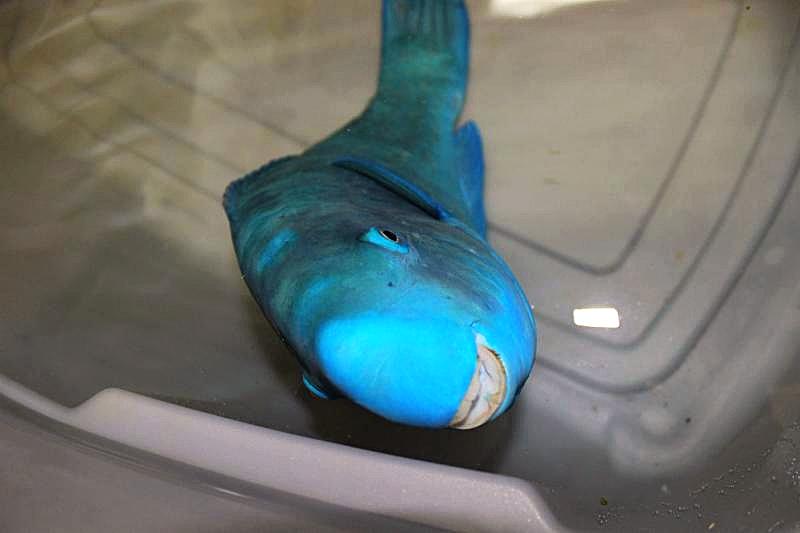
Blue parrotfish going under anesthetic

Blue parrotfish being removed from anesthetic
Before each fish was examined, they were first anesthetized in a solution rendering them unconscious and insensible to any pain. The length of time it took for each fish to go to sleep, was also the approximate amount of time it would remain sedated, giving Mr. Talbot an idea of how much time he had to take samples from the fish.
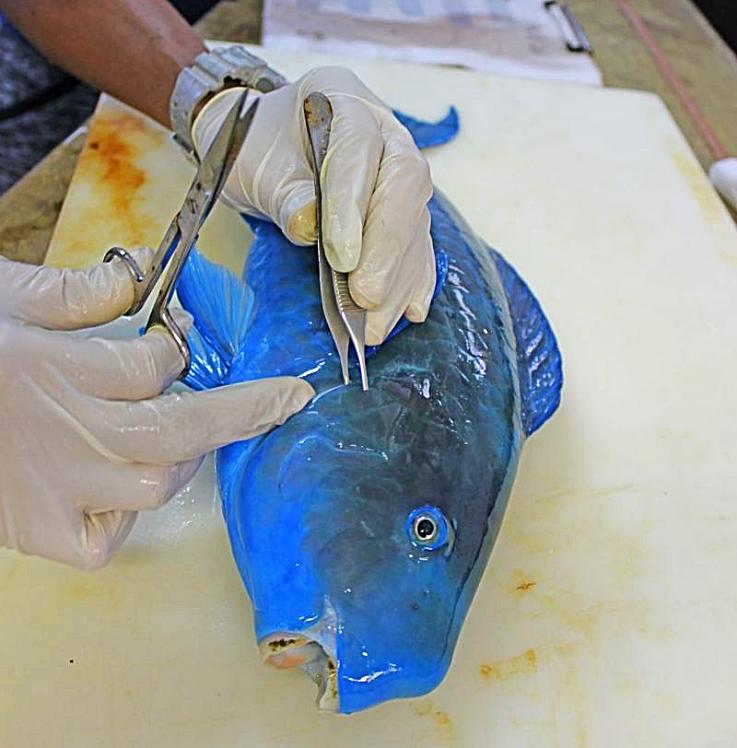
Blue parrotfish having its gills clipped
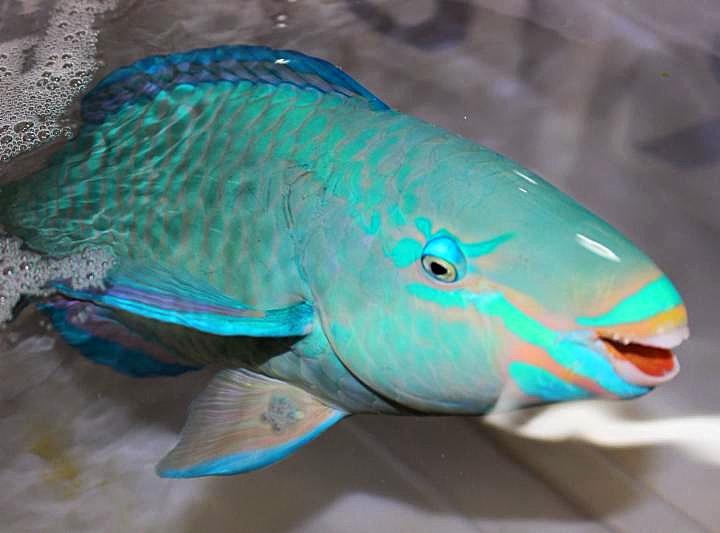
Queen parrotfish going under anesthetic
Each fish went through the same procedure; after sedation, they were removed from the water and placed on a cushion wrapped in plastic. Mr. Talbot quickly took a scale scrape, and a gill clipping - basically taking a sample of the skin mucous covering the scales and a tiny gill biopsy. The fish was then placed in a tub of fresh water, and Mr. Sanchez bubbled oxygen in the water surrounding the gills. The fresh water acted as final medication of sorts, as it would kill most external parasites (should there be any) and the bubbled gas helped ensure the fish had oxygen during its recovery from the anesthetic. After a few minutes, the animal was responsive and returned to a separate tank to await results of the procedure.
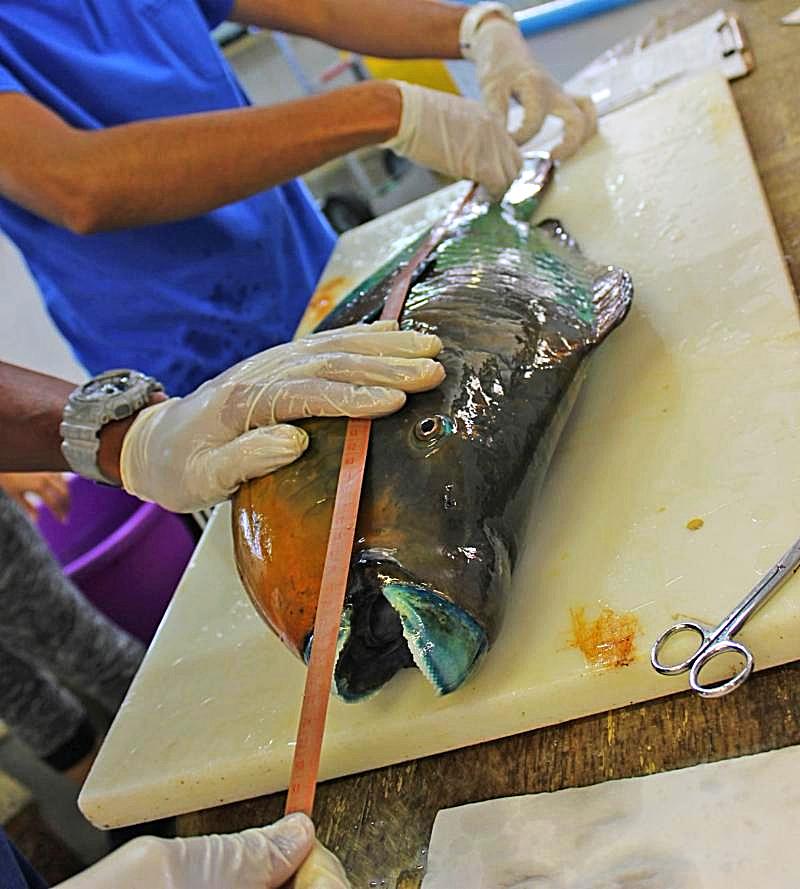
Rainbow parrotfish being measured
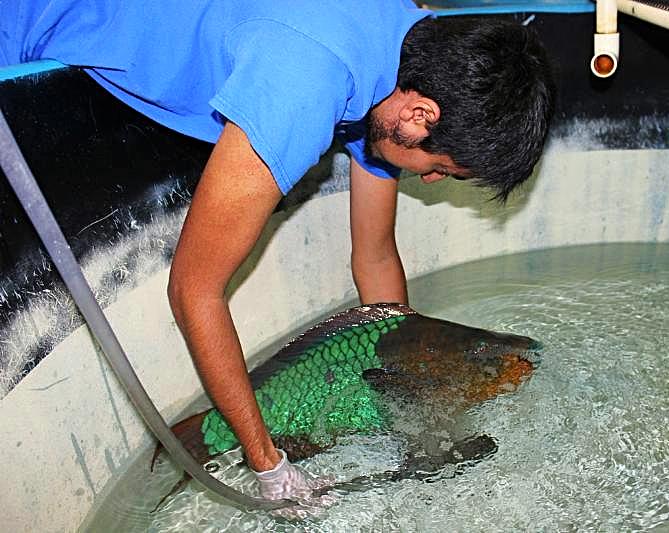
Mr. Sanchez running oxygen over the Rainbow parrotfish gills to aid in its recovery from the anesthetic
Once all the fish were sampled, Mr. Talbot took the scale scrapings and the gill clippings into the laboratory to be examined under a microscope for parasites infections, such as protozoa. If a parasite was found on either sample, the fish would have to go through another two weeks of quarantine and further treatment.
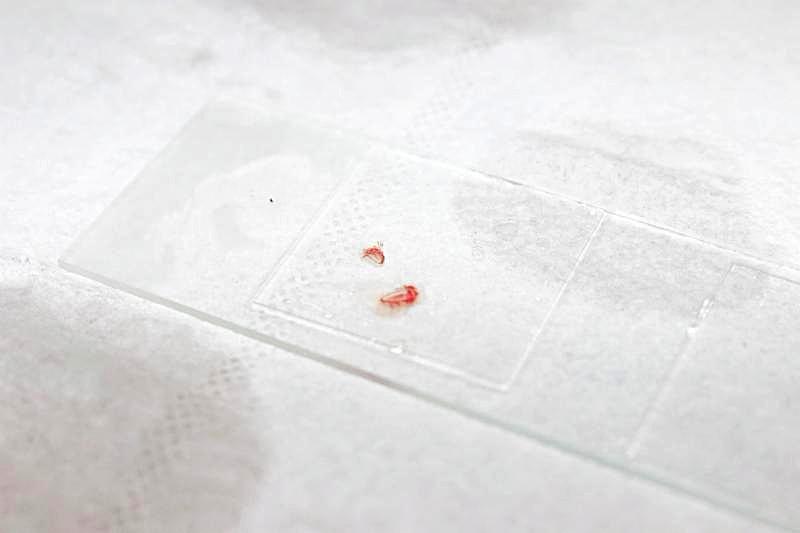
Gill clippings on a slide ready to be examined under a microscope
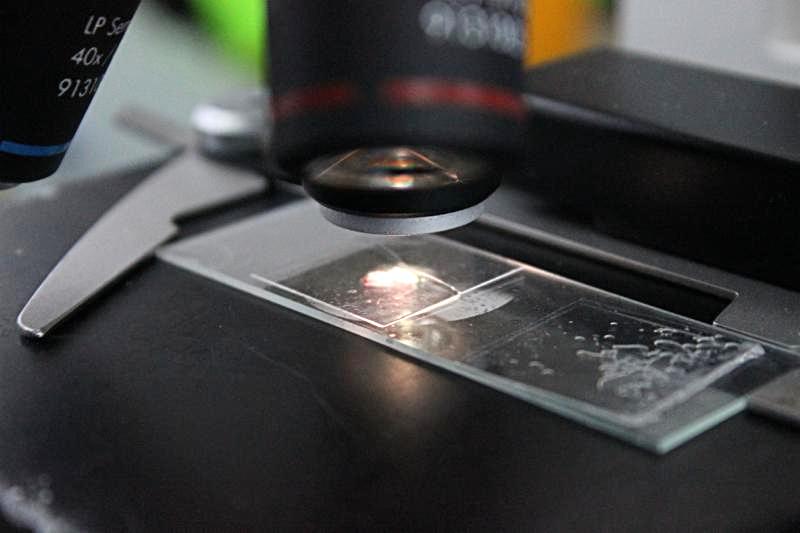
Gill clippings being examined

400x magnification of gill clippings
Thankfully, upon completion of the examination, all three fish were parasite free and received a clean bill of health. The queen and blue parrotfish were placed in the parrotfish habitat in the Aquarium Hall, and the rainbow parrotfish was placed in the North Rock habitat.
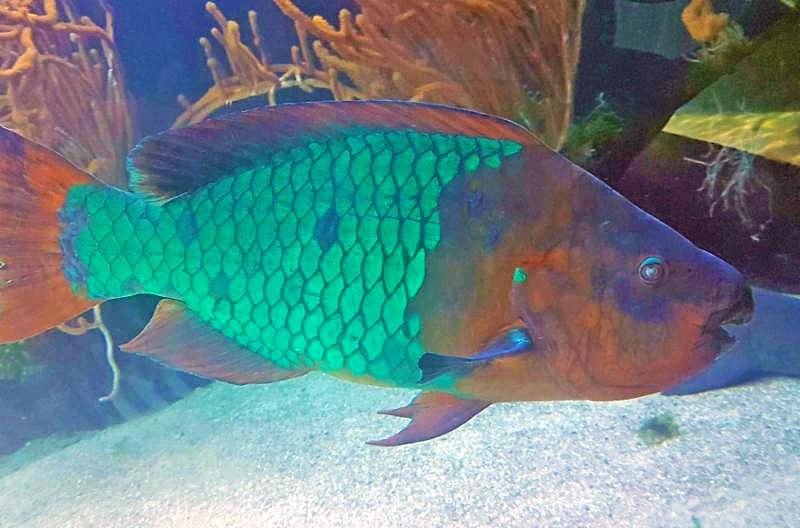
Rainbow parrotfish in the North Rock habitat
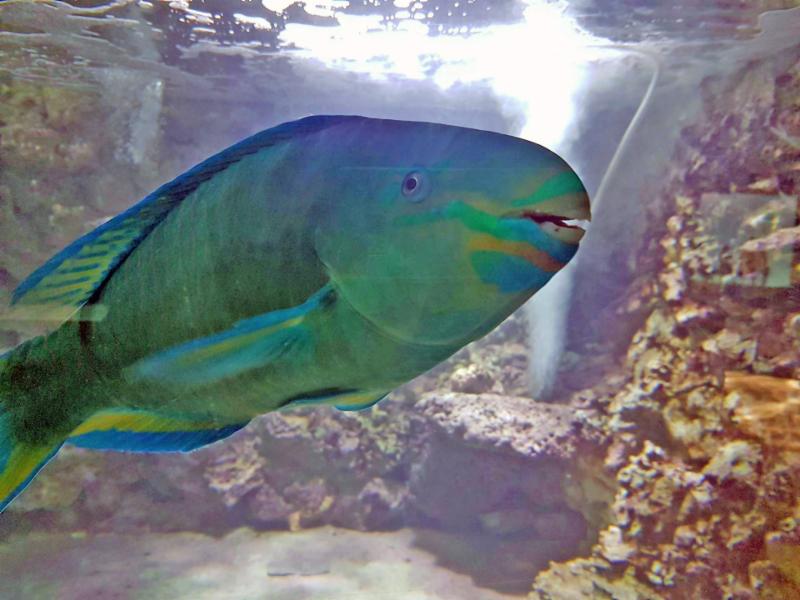
Queen parrotfish in the parrotfish habitat


